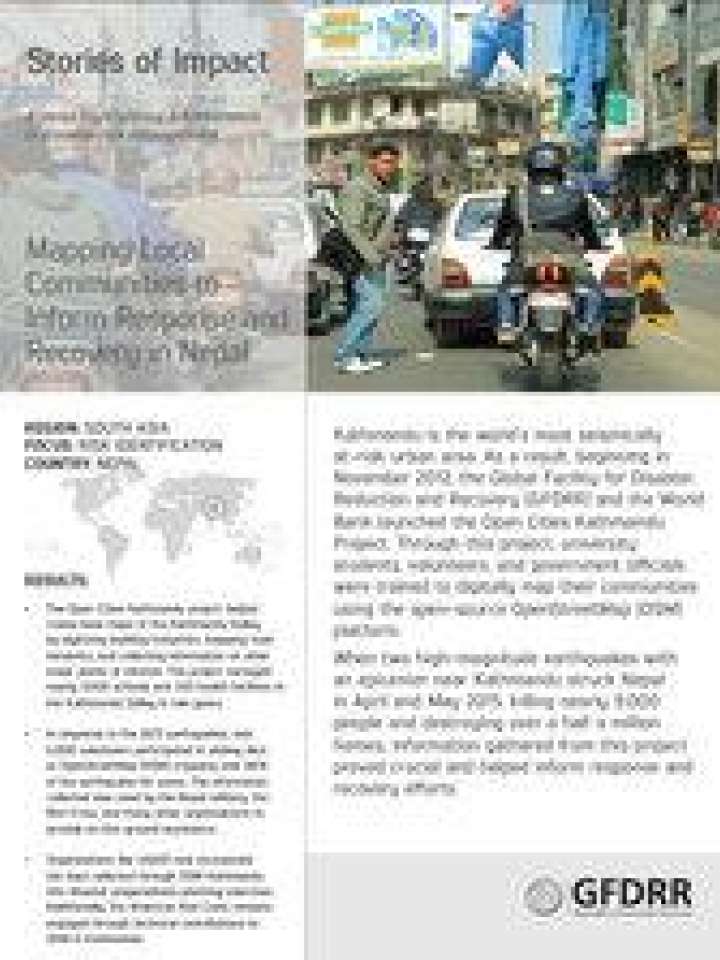Mapping local communities to inform response and recovery in Nepal
Kathmandu is the world’s most seismically at-risk urban area. As a result, beginning in November 2012, the Global Facility for Disaster Reduction and Recovery (GFDRR) and the World Bank launched the Open Cities Kathmandu Project. Through this project, university students, volunteers, and government officials were trained to digitally map their communities using the open-source OpenStreetMap (OSM) platform.
When two high-magnitude earthquakes with an epicenter near Kathmandu struck Nepal in April and May 2015, killing nearly 9,000 people and destroying over a half a million homes, information gathered from this project proved crucial and helped inform response and recovery efforts.
Stories of Impact is a series highlighting achievements in disaster risk management.
